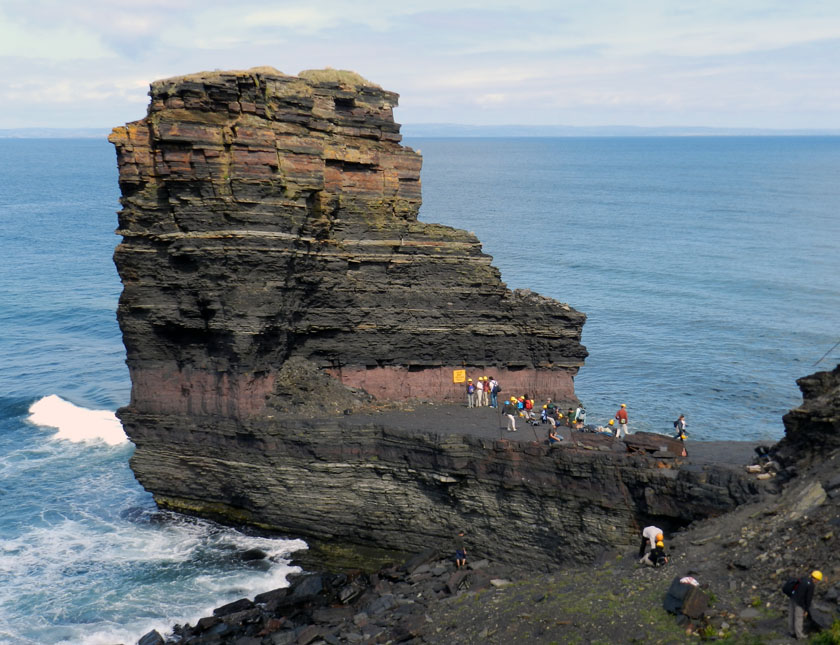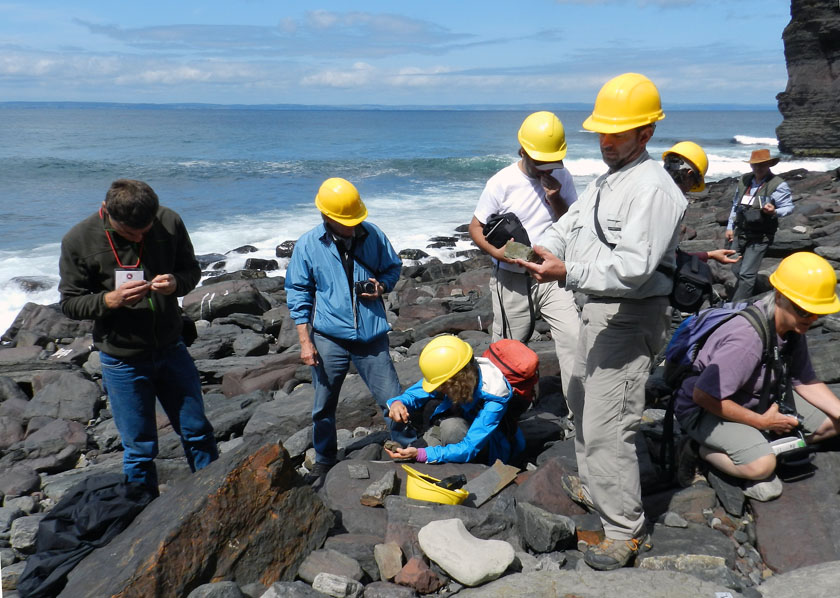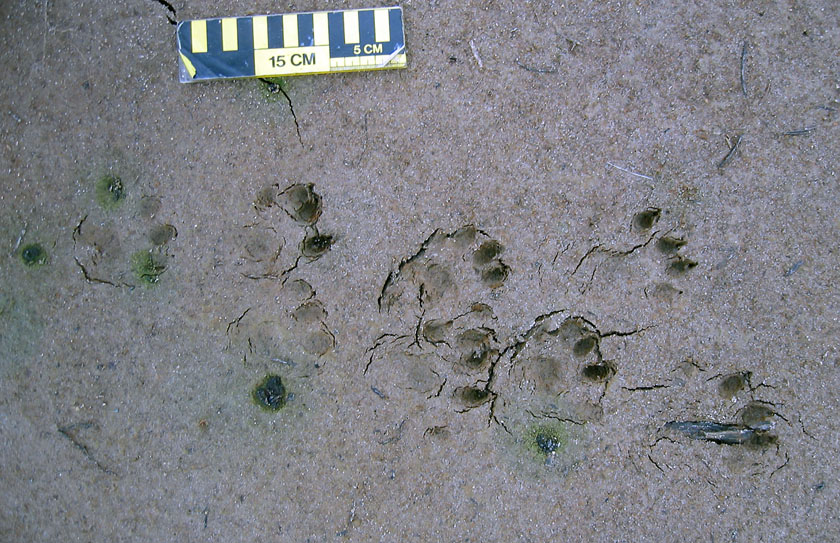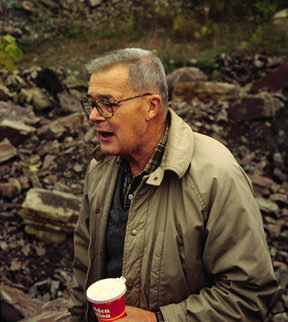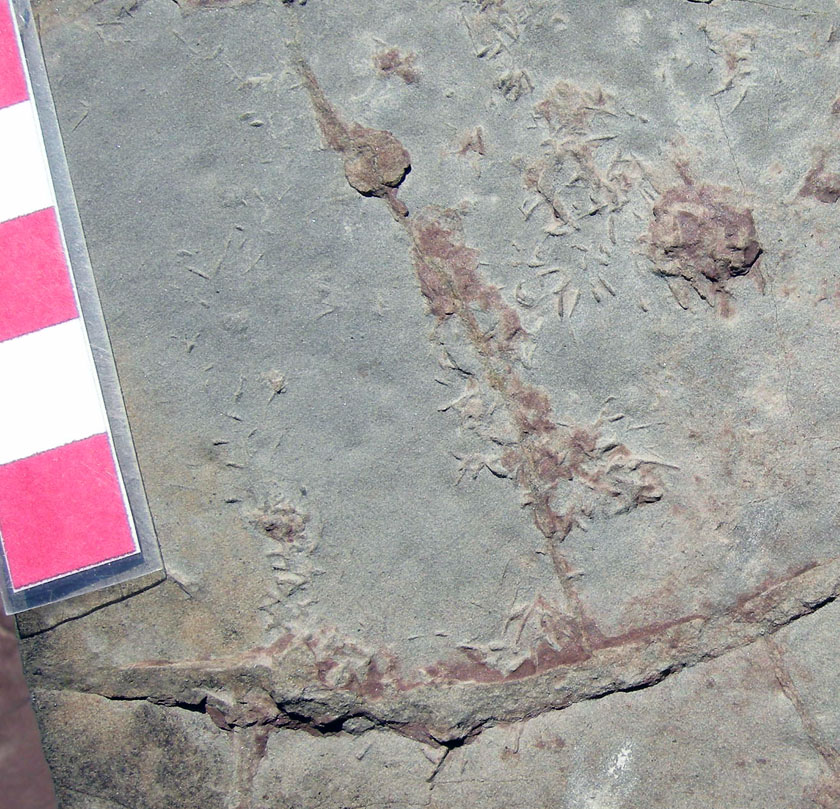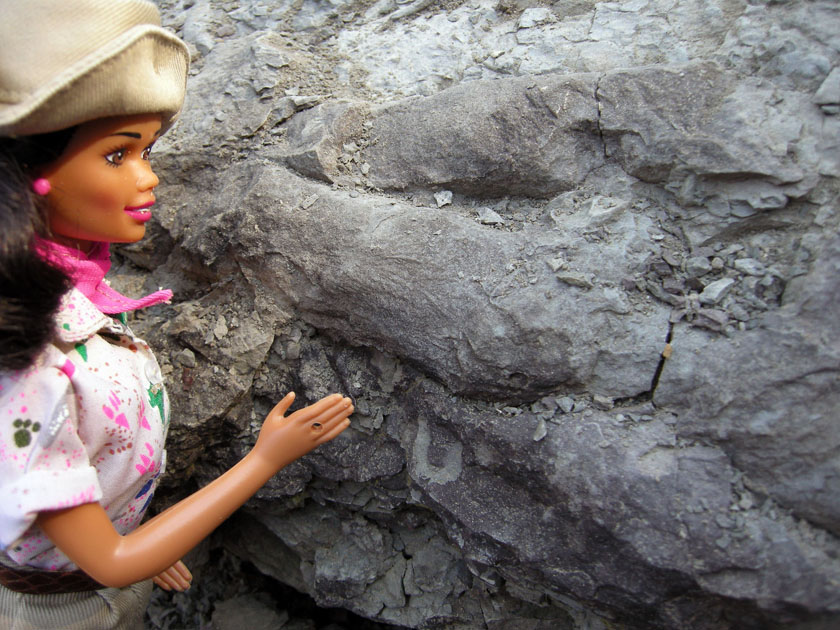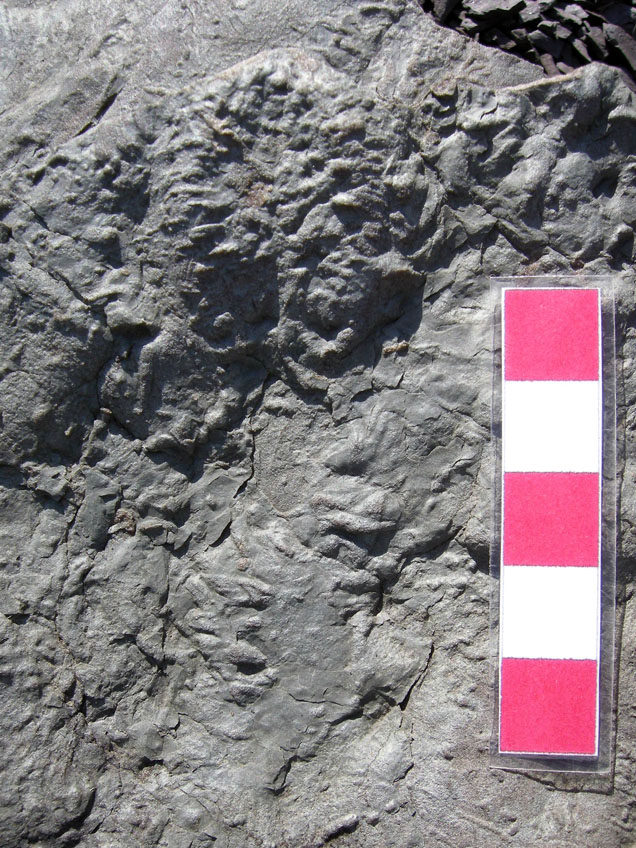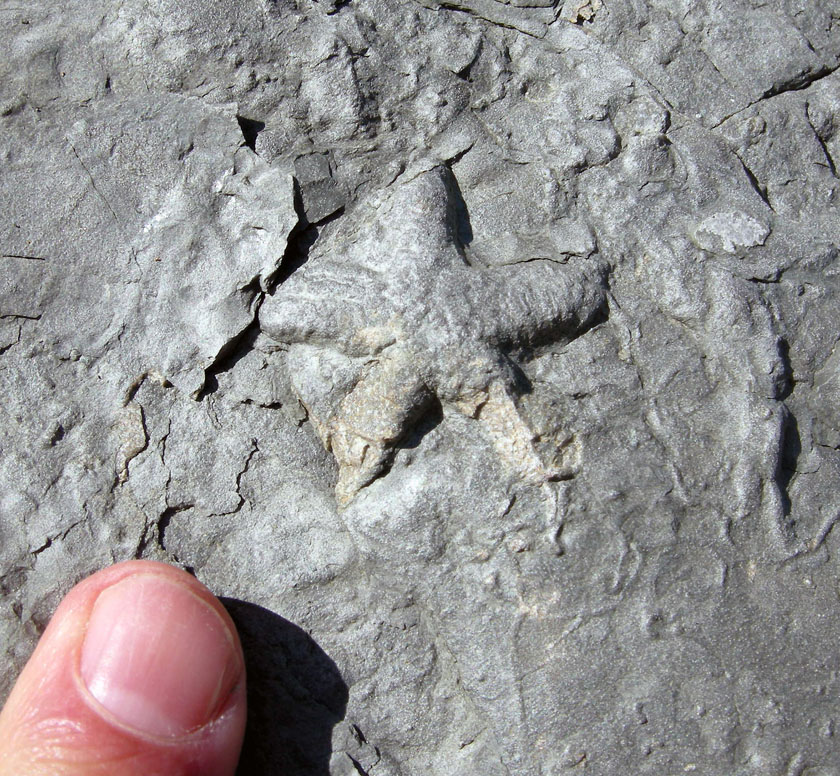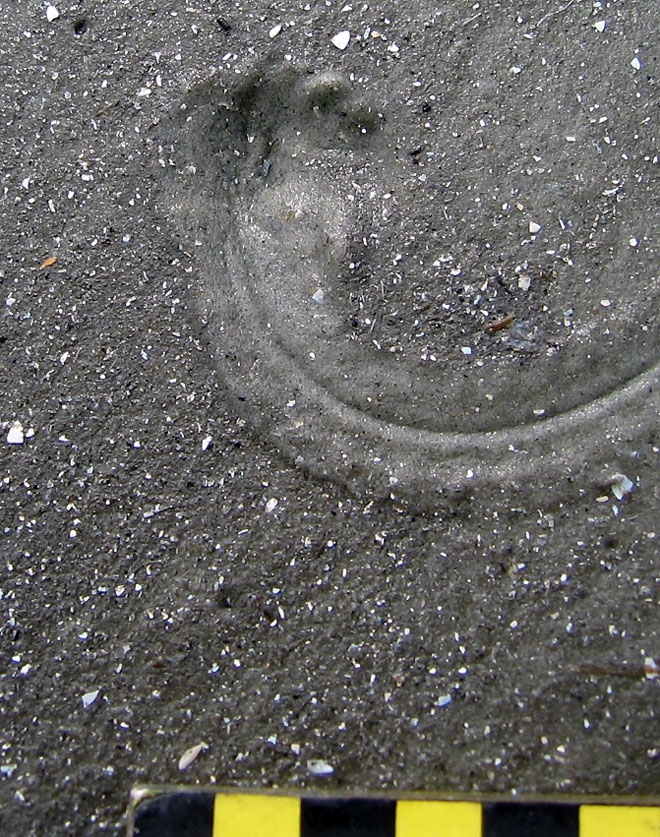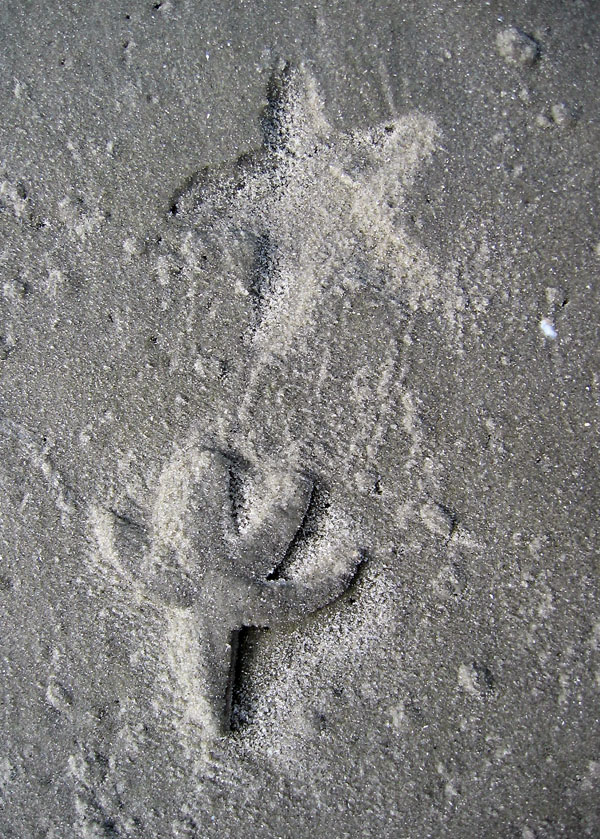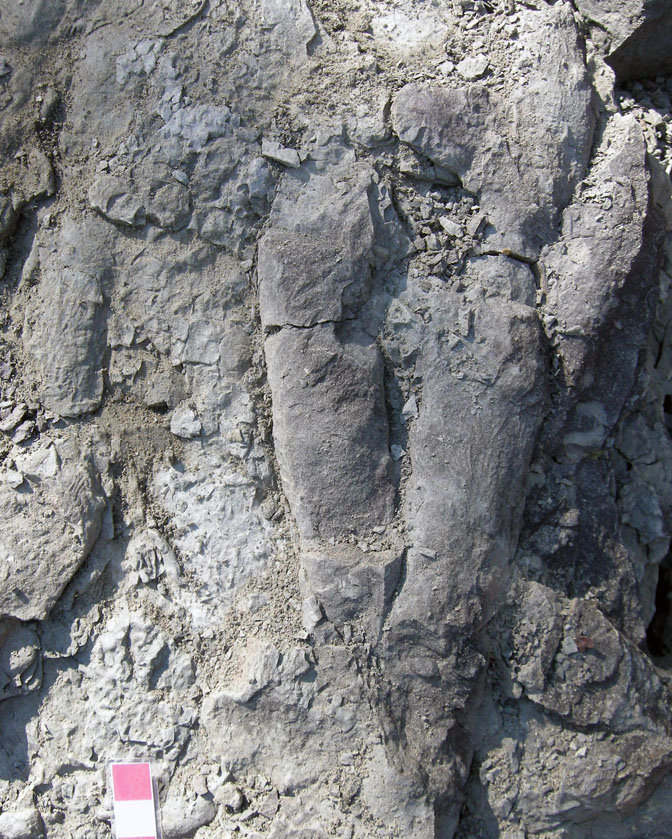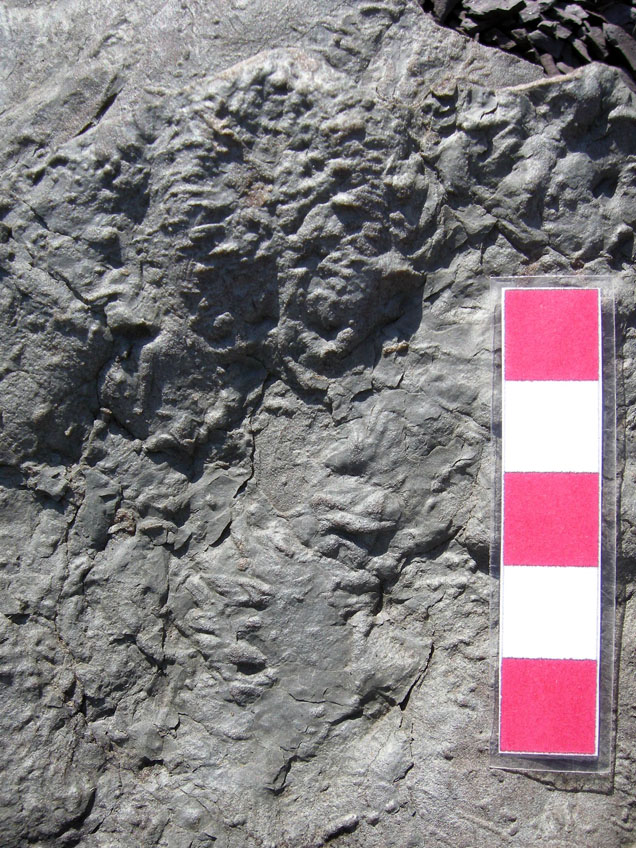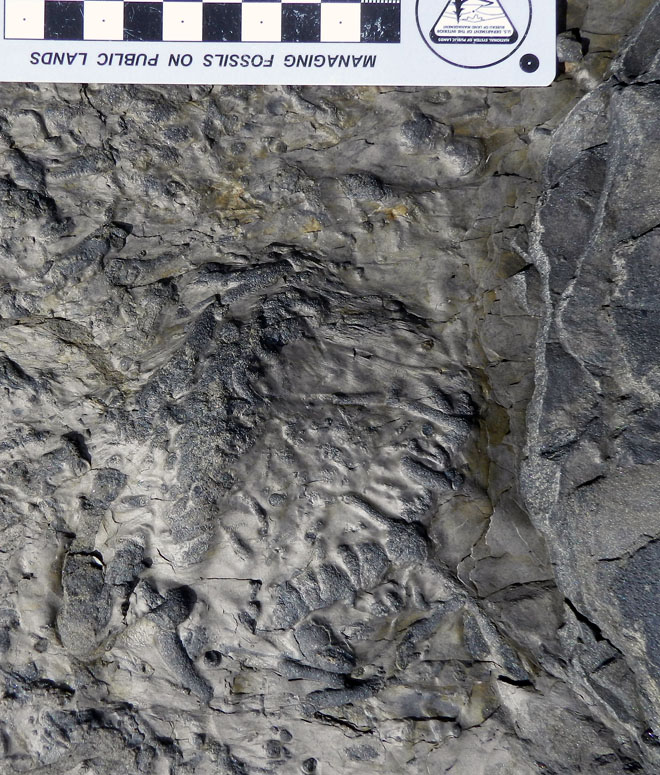Given all of the controversy over a recent cable-TV program, in which its broadcasting channel decided mythical marine animals deserved more air-time than real ones, I thought it was important to highlight one extant animal that never fails to surprise me. This animal’s lineage is more ancient than dinosaurs, reptiles, or even amphibians, with its oldest fossils dating from about 450 million years ago. It is also the largest living marine invertebrate animal you are likely to see on beaches of the eastern U.S. and Gulf Coast. And at this time of year, if you see it crawling around on a beach, it’s because of sex. For the past month or so, this animal has been participating in massive orgies. Pictures of this gamete-laden frenzy somehow made it past prudish censors of Facebook and other social-media sites, titillating prurient invertebrate enthusiasts everywhere and filling them with cockle-warming glee.
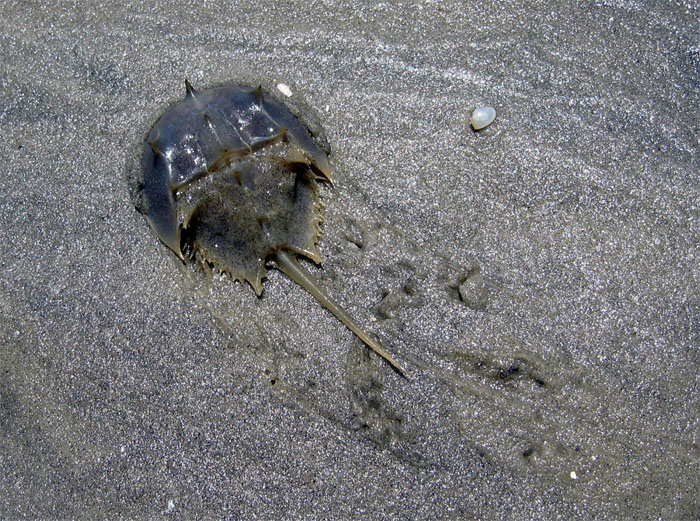 Behold, a fine juvenile specimen of the Atlantic horseshoe crab (Limulus polyphemus)! Although it lives in the ocean, it can walk on land for hours, like some sort of reverse Aquaman, but totally cooler than him. And some day, if this one lives long enough, it will use those legs to walk on land again, but in pursuit of sex. Sounds to me like this animal deserves its own planet. (Photograph by Anthony Martin, taken on Sapelo Island, Georgia.)
Behold, a fine juvenile specimen of the Atlantic horseshoe crab (Limulus polyphemus)! Although it lives in the ocean, it can walk on land for hours, like some sort of reverse Aquaman, but totally cooler than him. And some day, if this one lives long enough, it will use those legs to walk on land again, but in pursuit of sex. Sounds to me like this animal deserves its own planet. (Photograph by Anthony Martin, taken on Sapelo Island, Georgia.)
As you already know from reading the title of this post, I’m talking about horseshoe crabs. More properly known as limulids by real marine biologists and paleontologists, these ultra-cool, über-hip, but totally retro critters are more closely related to spiders than they are to true crabs, but their common name is so, well, common, that scientists just sigh and begrudgingly go along with it for the sake of public communication.
Modern limulids are represented by four species, three of which are in Asia, but the grandest of them all is the Atlantic horseshoe crab, Limulus polyphemus. This species is at its largest here in Georgia, which may be a function of the Georgia Bight, an extensive offshore shelf that affords more food and habitat than other areas. How big? I’ve seen some as long as 70 cm (27 in) – tail included – and 40 cm (16 in) wide, big enough to scare both of our cats at home. They grow to these sizes after hatching as little limulids not much bigger than the period on this sentence, an astonishing increase in mass if they make it to adulthood (which most don’t).
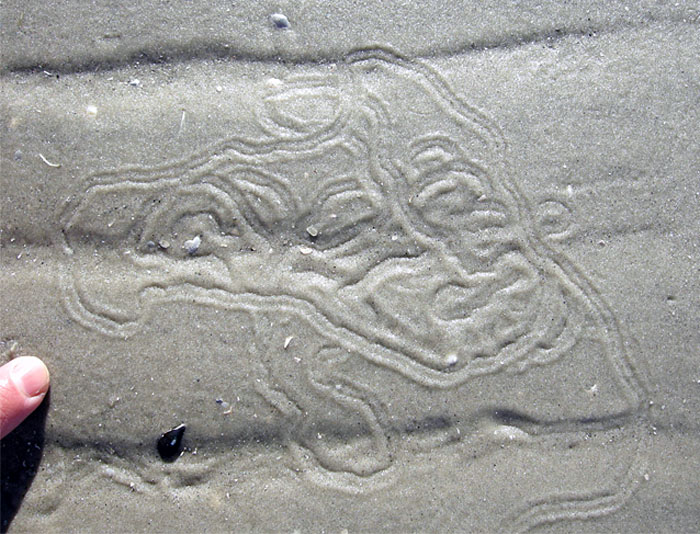 The circuitous trail of a baby limulid, made on a sandflat at low tide. Its body width can be estimated by the width of the interior of the trail, and its body length was slightly more than that, meaning it was smaller than my fingernail. See that central groove? That’s from its tail, but if you want to impress your friends, call it a telson. (Photograph by Anthony Martin, taken on Sapelo Island, Georgia.)
The circuitous trail of a baby limulid, made on a sandflat at low tide. Its body width can be estimated by the width of the interior of the trail, and its body length was slightly more than that, meaning it was smaller than my fingernail. See that central groove? That’s from its tail, but if you want to impress your friends, call it a telson. (Photograph by Anthony Martin, taken on Sapelo Island, Georgia.)
Horseshoe crabs are so astounding that I could go on endlessly about all sorts of facts about them. Fortunately for you, gentle reader, other folks have written entire books about them and heaps of popular and scientific articles. (For starters, try going here.) So I don’t want to needlessly duplicate what others have done, and done well. Instead, I’ll focus on my main interest in these animals – their traces – and will regale you with tales of the traces they can make with their tails.
Horseshoe crab tails are spiky projections called telsons. Based on lots of the traces I’ve seen on the Georgia coast and a few direct observations, the main function of a telson is to help a horseshoe crab to get back on its feet after being knocked onto its back. That is, whenever a limulid is upside-down, it immediately start using its telson as a sort of sideways pole vault to lever itself into a less vulnerable position.
Without a telson, an upside-down horseshoe crab is stuck; its legs run furiously, but to no avail. However, with a telson, it can put the pointy end into the sand or mud underneath its body, and push itself up from a surface. This gives a limulid a fighting chance to get back to where it once belonged and start walking. This strategy works best if it turns to its right or left side, as limulids are longer than wide. They may be wonders of nature, but they’re not doing back flips or somersaults.
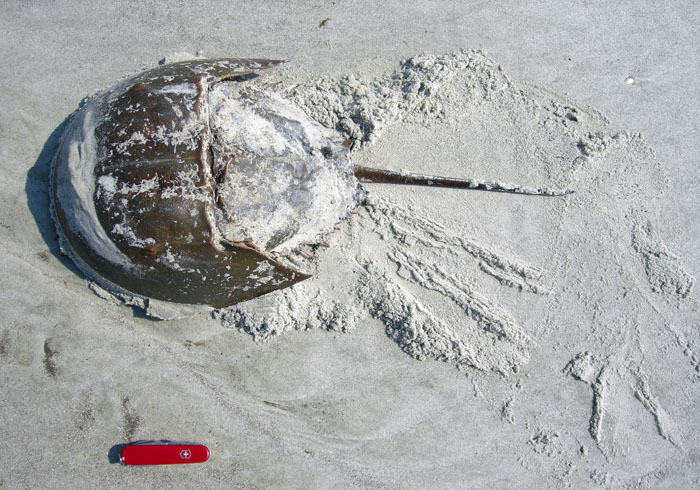 A large adult horseshoe crab that was right-side-up when trying to get back to the sea, got tired, and tried to use its telson to move itself along. In this instance, it didn’t work, but the traces made by the telson show its range of motion, working like a windshield wiper. (Photograph by Anthony Martin, taken on Sapelo Island, Georgia.)
A large adult horseshoe crab that was right-side-up when trying to get back to the sea, got tired, and tried to use its telson to move itself along. In this instance, it didn’t work, but the traces made by the telson show its range of motion, working like a windshield wiper. (Photograph by Anthony Martin, taken on Sapelo Island, Georgia.)
OK, all of the preceding information I already knew. After all, I have: coauthored an edited book chapter about juvenile limulid traces and their close resemblance to trace fossils made by trilobites; coauthored another article on the history of limulid-trace studies (which go back to the 1930s!) that’s now in review; and devoted a lengthy section of a chapter in my book to limulids as tracemakers. So you could say I’ve been feeling pretty cocky about what I knew about these animals as tracemakers. That is, until one horseshoe crab showed me how much I still need to learn about them and what they can make.
The humility-inspiring traces showed up in a photo on a Facebook page I follow (and so should you), the St. Catherines Island Sea Turtle Conservation Program. The program organizers – Gale Bishop and Robert (Kelly) Vance – regularly add photo albums showing sea turtle traces (trackways, body pits, nests), and otherwise report on other facets of natural history they observe on St. Catherines Island beaches. As a result, I live vicariously through these pictures while marooned in the metro-Atlanta area. But they also like to throw me ichnological stunners once in a while, such as the following photo that Kelly posted last week.
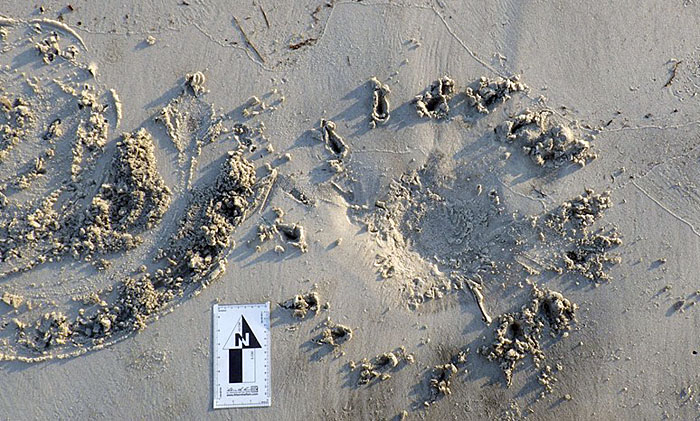 Who needs made-up animals on TV when traces like these, made by awesome invertebrates like horseshoe crabs, turn up on a Georgia beach? (Photograph by Robert Kelly Vance, taken on St. Catherines Island, Georgia; scale is about 15 cm (6 in) long.)
Who needs made-up animals on TV when traces like these, made by awesome invertebrates like horseshoe crabs, turn up on a Georgia beach? (Photograph by Robert Kelly Vance, taken on St. Catherines Island, Georgia; scale is about 15 cm (6 in) long.)
Kelly found these traces while patrolling the beaches of St. Catherines Island for other traces, namely those of expectant mother sea turtles. Although these distracted briefly from his mission, I was very happy he stopped to document these, as I had never seen anything like them, despite much looking at traces on Georgia beaches.
The holes in the sand, defining a nearly perfect circle, were made by the telson of an adult horseshoe crab that kept on trying to right itself after landing on its back. Each puncture mark shows where it inserted the telson into the sand and then pushed itself up and to its side. Based on the number of holes, direction of sand flung out of each hole, and little “commas” made by extraction of the telson, it tried to flip itself a minimum of 16 times, and all to the right. These separate actions culminated in a 360° clockwise rotation of its body. Also check out the central depression with smaller drag marks; this is where its head shield was in contact with the sand. To imagine the movement represented by these traces, think of a horseshoe crab doing a slow-motion, step-by-step, break-dance backspin.
Seeing the evidence for such persistence was wow-inducing in itself, but in my ichnologically influenced euphoria, I figured the limulid finally succeeded in righting itself. After all, the trackway just to the left of the trace, indicates where it walked away from the scene of its gravitationally challenged situation.
But then I realized there was no “impact mark.” This large horseshoe crab flipping itself onto the sandy surface should have registered an outline of its body before it started walking. Instead, the place where it started walking showed no such impression, meaning it must have made a soft landing, with only its legs and telson digging into the sand. What happened? Did it use mind over matter and levitate itself through telekinesis? Or was it gently picked up and placed on its feet by a merciful mermaid? (Or merman: let’s make sure we’re being inclusive when talking about made-up stuff.)
It turned out that Kelly was the dues ex machina that entered this limulid’s drama, providing divine intervention just when it was needed. When I expressed my puzzlement to Kelly about how this large arthropod finally turned itself over, he confessed to saving it, in which he lifted it and put it back on its feet, where it promptly walked away in a series of tight spirals. The spiraling is something I’ve seen before in their tracks, a method used to find the downslope direction, which normally leads horseshoe crabs to the low-tide mark and the comfort of a watery environment.
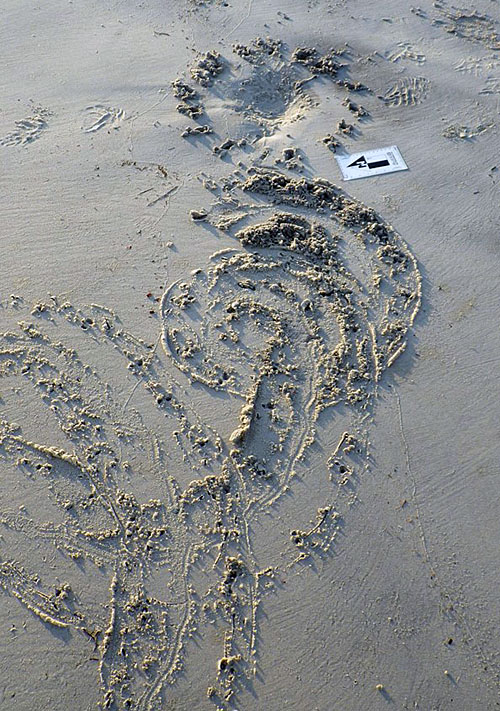 Another perspective of the “escape” traces made by the limulid’s telson (background), but this time with its tracks, showing how it started spiraling clockwise in an attempt to make its way back to the sea. Check out those telson drag marks in the trackway, doing a little bit of back-and-forth movement as its owner walked. (Photograph by Robert Kelly Vance, taken on St. Catherines Island, Georgia.)
Another perspective of the “escape” traces made by the limulid’s telson (background), but this time with its tracks, showing how it started spiraling clockwise in an attempt to make its way back to the sea. Check out those telson drag marks in the trackway, doing a little bit of back-and-forth movement as its owner walked. (Photograph by Robert Kelly Vance, taken on St. Catherines Island, Georgia.)
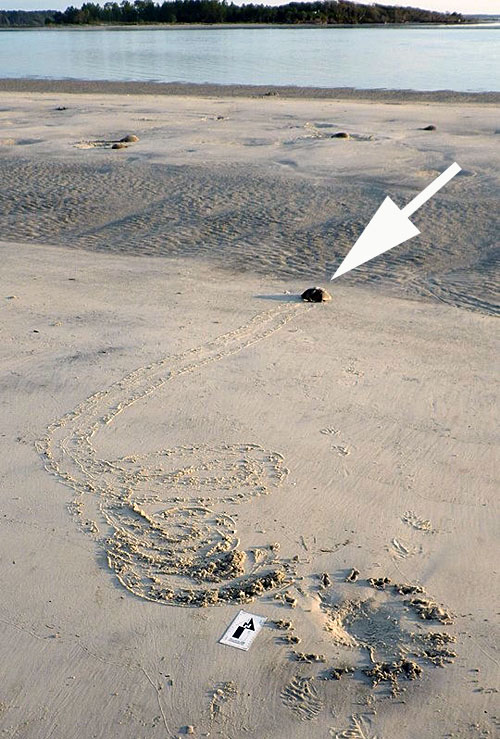 OK everyone, start singing “Born Free!” The spiraling helped this limulid (arrow) to find a downslope direction, which took it in the right direction to the sea. But it’s not all sunshine and lollipops for other limulids, some of which are visible in the background, and look like they’re still stuck. Given the tidal range on the Georgia coast – 2.5-3 m (8.2-9.8 ft) – strong wave energy, and wide beaches, lots of big limulids that come in with the flood tide get knocked onto their backs by waves and left behind. It’s almost as if some sort of natural selection is taking place, and something similar might have happened in the geologic past, affecting the evolution of its lineage. (Photograph by Robert Kelly Vance, taken on St. Catherines Island, Georgia.)
OK everyone, start singing “Born Free!” The spiraling helped this limulid (arrow) to find a downslope direction, which took it in the right direction to the sea. But it’s not all sunshine and lollipops for other limulids, some of which are visible in the background, and look like they’re still stuck. Given the tidal range on the Georgia coast – 2.5-3 m (8.2-9.8 ft) – strong wave energy, and wide beaches, lots of big limulids that come in with the flood tide get knocked onto their backs by waves and left behind. It’s almost as if some sort of natural selection is taking place, and something similar might have happened in the geologic past, affecting the evolution of its lineage. (Photograph by Robert Kelly Vance, taken on St. Catherines Island, Georgia.)
In the last photograph, I was glad to see how the story told by these traces promised a happy ending for this limulid that had so stubbornly tried to put itself back on its feet. Yet when you also notice how many of its compatriots did not make it back into the life-nourishing sea, it also serves as a sobering reminder that storybook endings don’t always happen in nature, and what we wish to be true sometimes isn’t.
In this instance, I don’t know whether this horseshoe crab made it back into the sea to live another day or not. Still, the lesson it left for us in the sand lives on, and I am now slightly more confident that if any limulids were stuck on their backs at any point in their 450-million-year history, made similar traces with their tails, and these marks were preserved as trace fossils, we just might recognize them for what they are. For that alone, I am grateful. Thank you, horseshoe crabs, for being real, making traces, and continuing to share this planet with us today.
(Acknowledgement: Special thanks to Drs. Robert Kelly Vance and Gale Bishop for being my ichno-scouts on St. Catherines Island, and feeding my mind with such tasty treats while I am landlocked.)
Further Reading
Brockmann, H.J. 1990. Mating behavior of horseshoe crabs, Limulus polyphemus. Behaviour, 114: 206-220.
Martin, A.J. Life Traces of the Georgia Coast. Indiana University Press, Bloomington, Indiana, 692 p.
Martin, A.J., and Rindsberg, A.K. 2007. Arthropod tracemakers of Nereites? Neoichnological observations of juvenile limulids and their paleoichnological applications. In Miller, W.M., III (editor), Trace Fossils: Concepts, Problems, Prospects, Elsevier, Amsterdam: 478-491.
Shuster, C.N., Jr., Barlow, P.B., and Brockmann, H.J. (editors). 2003. The American Horseshoe Crab. Harvard University Press, Cambridge, Massachusetts: 427 p.

